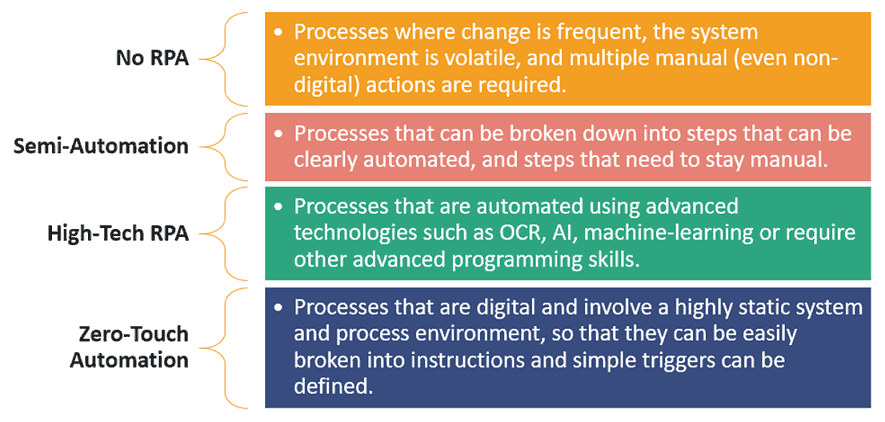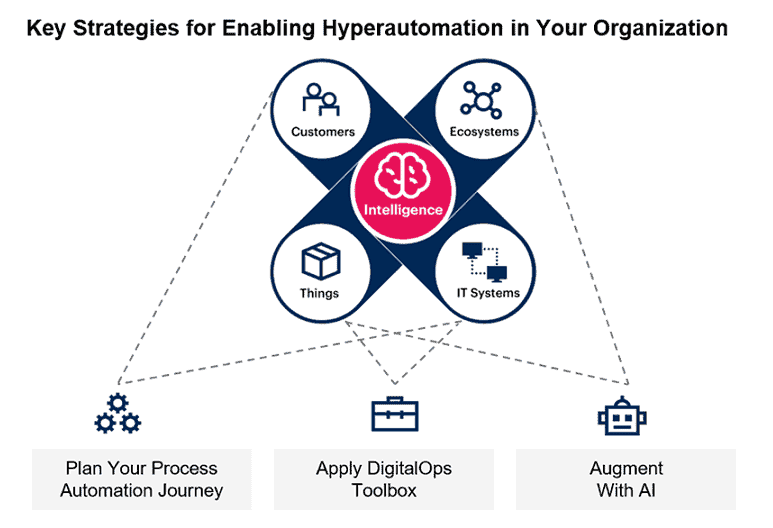What is Hyperautomation?
How to Automate End-to-End Processes
Hyperautomation is the term used to describe next level automation, which is achieved by using a combination of Robotic Process Automation, Artificial Intelligence and Machine Learning. Here, we’ll explore what hyperautomation is, and how to can be used to automate end-to-end processes.
What is Hyperautomation?
According to Gartner, hyperautomation refers to an approach in which organizations rapidly identify and automate as many business processes as possible.
It involves a combination of technology and tools, including but not limited to machine learning, packaged software and automation tools to deliver work. The idea is to automate more and more knowledge work, and engage everyone in the organization to be part of the transformation.
It’s important to clarify that hyperautomation is not limited to artificial intelligence or machine learning. It can use any tool that can automate a process that was previously not possible, envisioning the automation of an entire process versus just parts of it. Looking at the image below, we show how a fully automated processes can be achieved by covering zero-touch automation and high-tech RPA.

Hyperautomation is the next step in your automation journey. RPA may provide quick relief as a noninvasive form of automation. However, processes are not always simple, routine, repetitive or stable. They may involve steps where intelligent automated decision-making is needed, or cognitive capabilities of a human need to be applied.
Complex processes that would normally have been out of the scope for automation can now become automation candidates by adding AI or ML tools, such as natural language processors (NLP) and intelligent document processing. Hyperautomation enables end-to-end process automation, creating the avenue for complex processes to be streamlined and error free.

Image retrieved from Gartner
Where to Start with Hyperautomation
Developing and abiding by a hyperautomation roadmap is a crucial step in the adoption process. First, lay out the desired business outcome and the processes that need to be optimized. This is very important before automating and assembling tools from the digital operations tool box.

Image retrieved from Gartner
How to Design Your Roadmap

Image retrieved from Gartner
Looking for more on automation?
Explore more insights and expertise at smartbridge.com/automation
There’s more to explore at Smartbridge.com!
Sign up to be notified when we publish articles, news, videos and more!
Other ways to
follow us:




